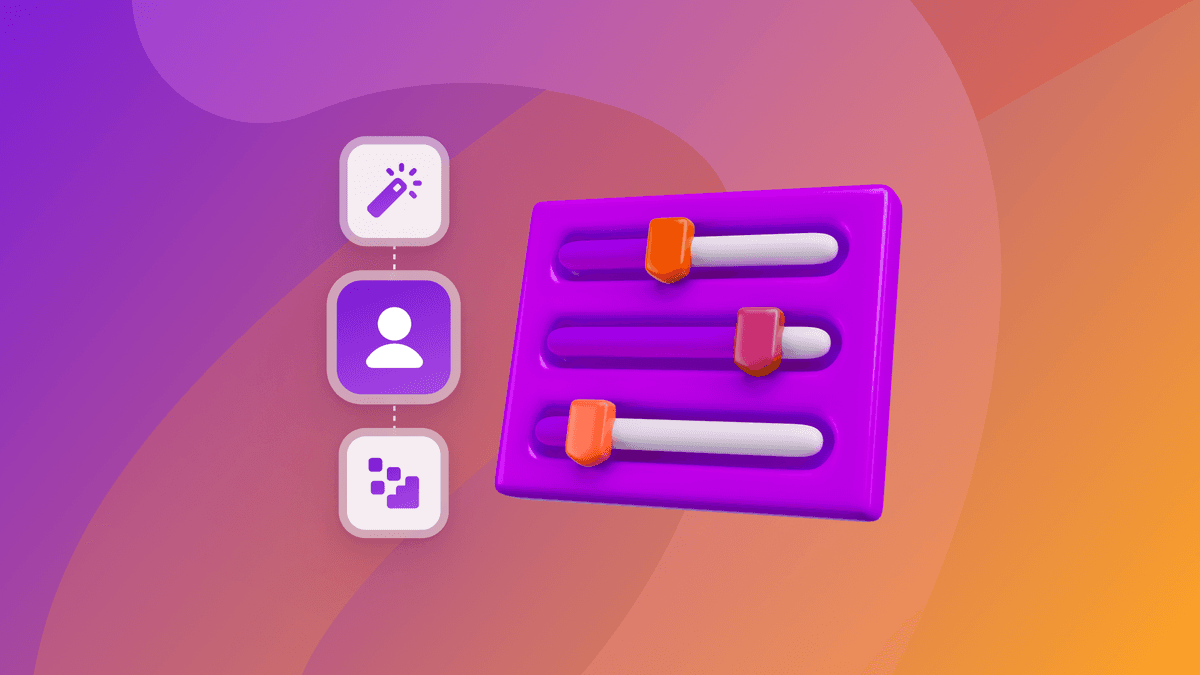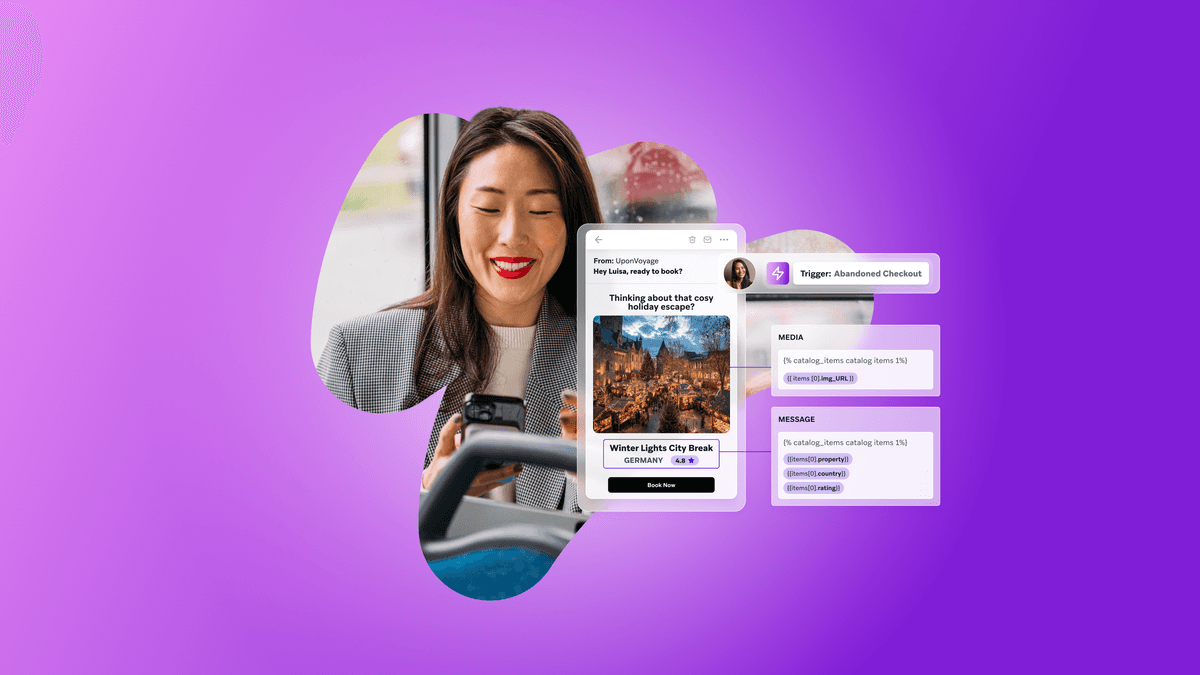The Secrets of Customer Engagement
Published on March 05, 2024/Last edited on March 05, 2024/9 min read


Team Braze
Successful customer engagement doesn't happen in a vacuum. Brands need the right customer engagement tools and the right customer engagement strategies. But they also need to ensure they have the right processes in place to drive successful outcomes.
At FORGE 2023, the annual Braze customer engagement conference, we had the chance to connect with three leading marketers to hear about the customer engagement processes that are the secret to their brands’ successes.
Brianna Morris, CRM Technical Operations Manager at Etsy, Geoffrey Bernard, Vice-President, Marketing, Data & Consumer Insights at La Presse, and Spencer Barber, Analyst, Customer Retention at KFC shared the different ways they've built, maintained, and iterated on their processes to drive additional value, empower cross-functional collaboration, support creativity and innovation, and streamline workflows as their organizations scale.*
Can you tell us about some of the core processes that help your brand achieve success with customer engagement?
Brianna Morris, CRM Technical Operations Manager at Etsy: I have found the most important processes to put in place are standardization and knowledge transfers on at least a quarterly basis.
Standardizations in the way we build campaigns as a team—naming conventions, segmentation methodology, QA processes, escalation plans, etc., but also standard project milestones with assigned roles, especially if your team does not have a dedicated production wing.
Spencer Barber, Analyst, Customer Retention at KFC: I’m a big believer in the importance of post-mortem discussions to continue driving innovations and streamline enhancements to cross-functional performance.
I’m also big on process documentation. In my experience, things move really quickly, so standardizing campaign setup, a hierarchy for conversion tracking, and reporting requirements has really helped our team.
Geoffrey Bernard, Vice-President, Marketing, Data & Consumer Insights at La Presse:
For us, it’s been about working as a “pod”—a group of people from different departments, including marketing, tech, product, comms, and our newsroom—organized around optimizing for a predefined outcome.
We brainstorm ideas together, put all of our ideas in a backlog, score those ideas using an unbiased method—we use the impact, confidence, and ease (ICE) scoring model—and then work as a group to tackle as many ideas as possible as quickly as possible.
What thoughts do you have about balancing process and creativity in regard to customer engagement?
Spencer: I once avoided all processes and project management systems—now I can’t function without either.
What we’ve seen work is splitting a team up between strategy, execution, and analysis. It’s difficult to be the judge, jury, and executioner, so having dedicated sub-teams helps keep the work streamlined. The creativity is born with the strategy team, but, with a clear goal in mind, the execution team can iterate on that via functionality within Braze (using Action Paths, Experiment Paths, etc).
Beginning with a clear goal in mind will help others flex their creative muscle within their respective areas.
Geoffrey: I used to be in the camp of “process kills creativity.” Now I’ve switched to the other side. Our process of operating as a pod prevents our organization from becoming affected by HiPPO disease (deferring to the highest-paid person’s opinion, rather than making data-driven decisions). Instead, we let everyone come up with ideas and we become very efficient at testing, evaluating results, and iterating.
Brianna: I’m definitely in the camp of “processes help enable creativity.” When you have strong processes, it helps to surface experiment opportunities. Processes should be standard, but not so rigid that deviations cannot happen and, when things change (goals, personnel, etc.), processes should be re-examined to make sure they still make sense.
Can you share an example of how effective processes can pay off, resulting in better business results, more efficiency, or stronger customer relationships?
Geoffrey: Yes, since 2019, our customer engagement processes have enabled our organization to convert almost 80K of our readers—who can get all of our content 100% for free—to make a financial contribution to our news organization. They don’t have to donate, our content is free and they don’t get anything more out of making a contribution, but thanks to our customer engagement program and the deliberate implementation of the customer journeys our team has put thought into, these readers decided to make a donation.
That, to us, is the best testimony of a program that works—a bilateral exchange of value not because our audience has to but because they want to.
Brianna: One example of a critical customer engagement process that can pay off is segmentation. Many marketers downplay the effect of good segmentation on not only the customer experience but also on the performance and overall health of a brand’s whole customer engagement program. It’s important to be bullish on not just who campaigns get sent to, but who should NOT be receiving campaigns as well, as it helps improve your metrics, removes users who don’t want specific messages from you to begin with, and is overall great for deliverability.
Segmentation enables you to remove users from flows that don’t serve them and lets your team strategically craft journeys better suited for your different audiences.
What are some of the warning signs or symptoms that your processes might be breaking down, or need to evolve?
Spencer: Missed deadlines are a sign that a brand’s processes are breaking down. This usually happens when the work that should be taking your program to the next level takes a backseat to other work or team members try to do too many things at once.
Brianna: When there’s confusion around “next steps,” you find yourself or your team repeating steps in multiple places, or there are vocal complaints about things being “clunky.” This usually happens when onboarding or offboarding new team members or when new findings emerge during experimentation or QA.
Geoffrey: Team disengagement is a major warning sign, the root cause of which could be that teams are working towards an unattainable outcome or that there’s a rotten apple in the pod.
What role do iteration and testing play in creating and maintaining effective customer engagement processes?
Geoffrey: A central one. Our whole practice revolves around the premise that we don’t know what will work but that we will be the very best group at testing and iterating quickly to figure it out.
Brianna: The thing I love most about CRM is there is never one “perfect” way of doing something. All processes can and should be tested because the findings may surprise you.
“This is the way we’ve always done it” should never be the end all be all.
Spencer: Keep testing simple and calculated. Too many variables won’t help your program or the business move forward. Consider developing quarterly “test and learn” calendars. Just like you’d plan your 2024 calendar ahead of time, try to align your “test and learn” efforts with your overall business goals.
What are some of the challenges that you’ve seen when it comes to putting effective processes in place for customer engagement?
Brianna: Enforcement, buy-in, adoption, and communicating expectations are all challenges that can arise when implementing customer engagement processes.
You can make the best processes in the world, but if you do not have the authority to make them followed, it’s very difficult to enforce. Until you have proper processes in place, you’ll never be able to gauge the effectiveness of your program or scale effectively.
Can you speak to your experiences with cross-functional collaboration?
Spencer: If your roadmap isn’t in alignment with the rest of your organization, you’re going to run into prioritization conflicts.
It’s so easy to fall into working in silos, but what we’ve found helpful is having a dedicated project owner to help bridge the gap between our customer engagement and development/MarTech teams.
Brianna: It’s very important to be in sync with stakeholders and technical partners.
For stakeholders, there needs to be agreement on many things, but especially turnaround times, risk management parameters and best practices around which customers can and can’t receive campaigns, and final dates for edits.
For technical partners, there needs to be alignment on escalation plans, data formatting, and alerts when possible.
What are your tips for ensuring teams stay aligned on processes?
Geoffrey: Everyone should have shared accountability around outcomes and feel like we’re all chasing the same goal, together. There’s no place for a “that’s not my job” attitude.
When we are onboarding a new person, they very quickly get the feeling that they are contributing directly to the success of the team!
Spencer: Sticking to a process can be difficult, but laying the groundwork and giving your team the freedom to be honest and innovative is key. Trust your team. Giving your team a voice will go a long way. Stick to the process and revisit iterations during your post-mortem discussions.
Brianna: Align on goals with stakeholders, as a best practice and especially when you lack the authority to enforce processes yourself. Sometimes goals may be competing, especially when processes trim down potential audience sizes.
Create an operations roadmap. Just as you’d map out your campaigns, map out the learnings, operations, and data you need to support your initiatives.
Run experiments to test processes when there is a lack of agreement.
What’s one of the top benefits of using a customer engagement platform like Braze for streamlining your customer engagement program processes?
Brianna: Standardization, standardization, standardization. The easier it is to find things, create things, and segment accurately, the greater the chance your team will do things according to the processes and best practices you’ve aligned on.
Geoffrey: Leveraging multi-step automation with Canvas and our own calculated signals, traits, and attributes combined with Braze’s ability to create variants and measure performance against those variants has been amazing.
Spencer: Democratizing access to data—being able to give our team access to what they need to build right within Braze.
If you had to give one piece of advice to others who are working to implement or improve their customer engagement processes, what would it be?
Geoffrey: It’s not one person’s job. Find the right people in each department and get them to work together to achieve a common outcome.
Brianna: Give yourself grace. It takes much longer than you think to develop these processes and even longer for team adoption.
Plan for that, and come with a strong business case if you’re getting push back. Make sure those who will be affected by these processes are involved before they are rolled out. The insight you gain from them is invaluable and they’re more likely to adopt when involved.
Spencer: Planning will be your friend and your customer engagement strategy is only as good as your organization’s ability to plan efficiently. Be ready to pivot; be nimble.
Want more? Forge 2023 On Demand is streaming now!
*This conversation has been edited for length and clarity.
Related Tags
Be Absolutely Engaging.™
Sign up for regular updates from Braze.
Related Content
View the Blog
How behavioral marketing turns data into personalized experiences

Team Braze

How Braze supports exceptional customer engagement during Black Friday, Cyber Monday, and beyond

Todd Grennan

How to overcome messaging fatigue this holiday season
